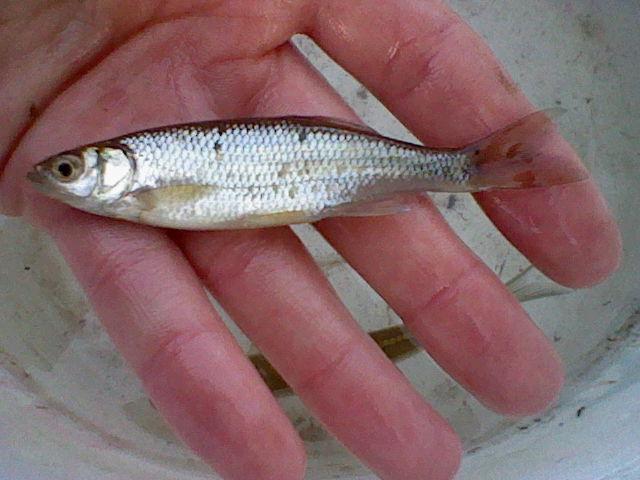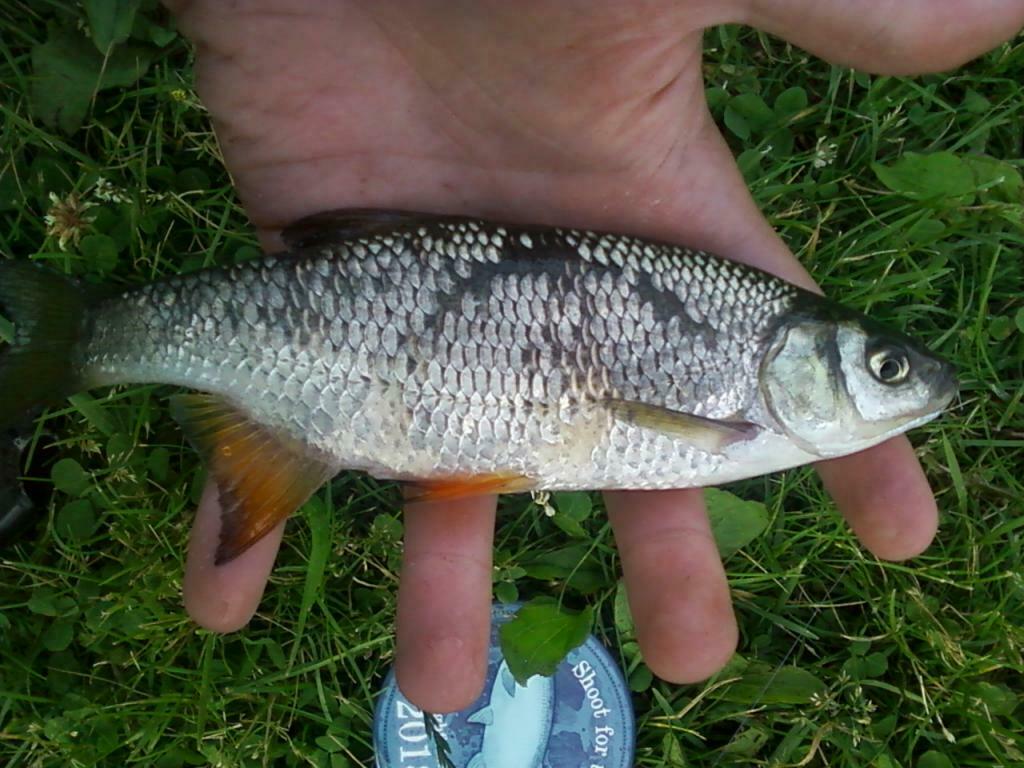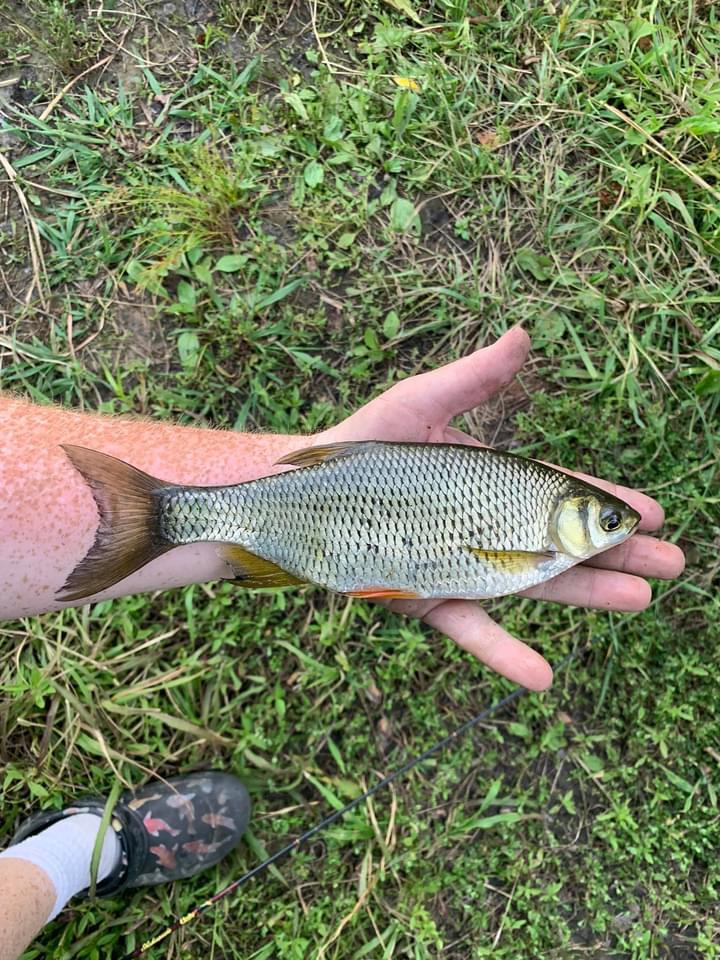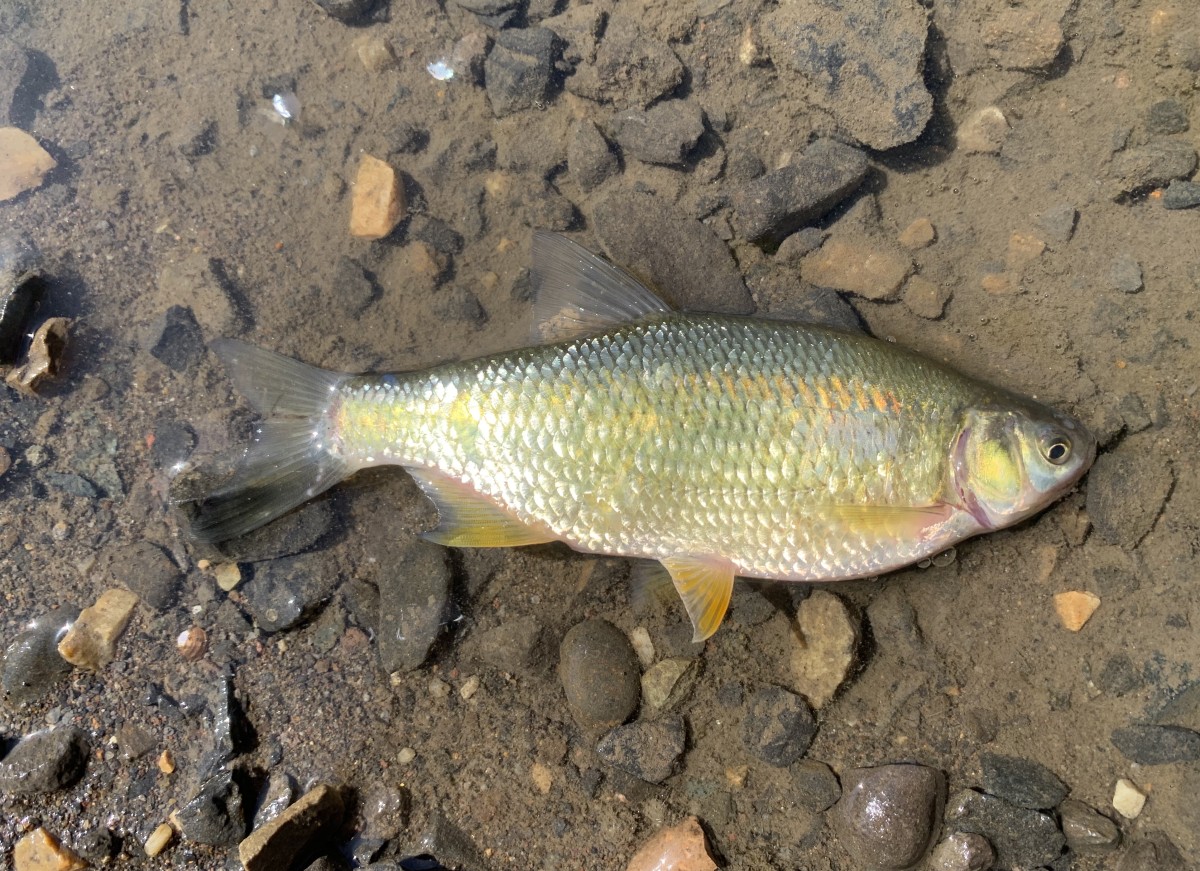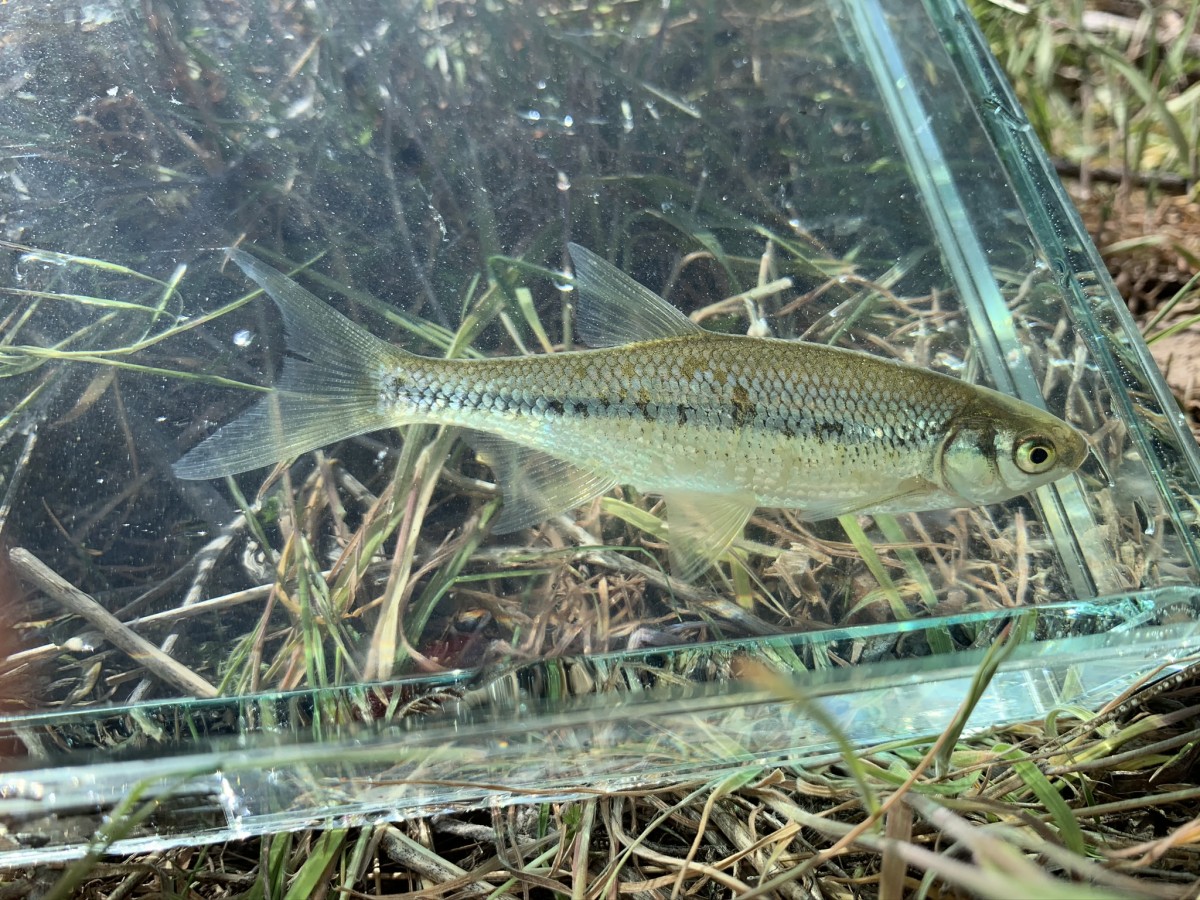Golden shiner
(Notemigonus crysoleucas)
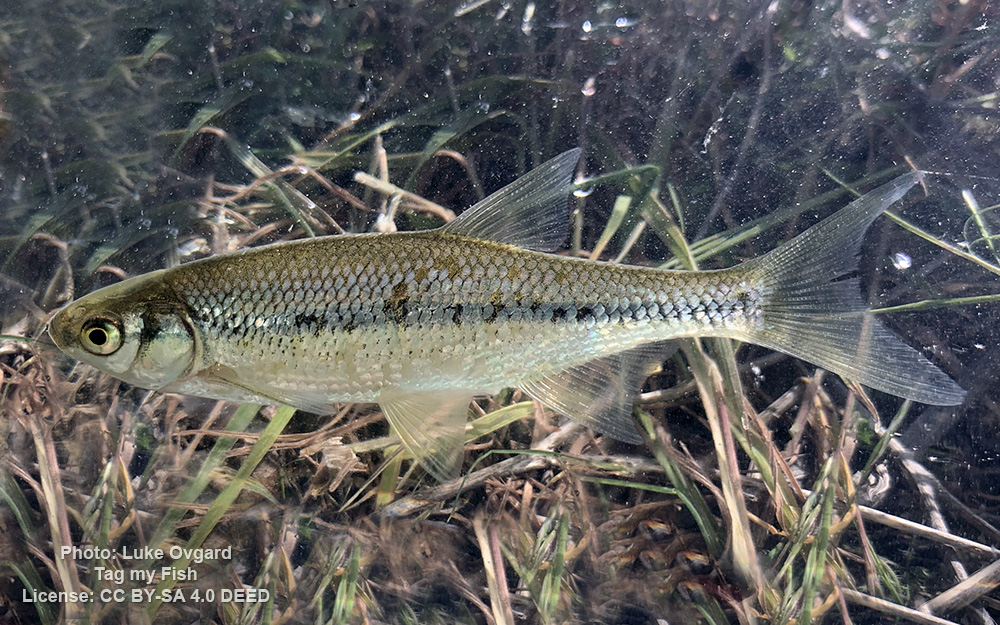
Image source: Luke Ovgard | Tag my Fish
Classification
General data
The golden shiner (Notemigonus crysoleucas) is a cyprinid fish native to eastern North America. It is the sole member of its genus. Much used as a bait fish, it is probably the most widely pond-cultured fish in the United States.
It is the only North American member of the largely Eurasian subfamily Leuciscinae.
Description
Though it has been known to reach lengths of 30 cm (12 in), in the wild the golden shiner is usually between 7.5 and 12.5 cm (3.0 and 4.9 in) long. The body is laterally compressed (deep-bodied). The back is dark green or olive, and the belly is a silvery white. The sides are silver in smaller individuals, but golden in larger ones. There can be a faint dusky stripe along the sides.
The anal fin is large and has 8-19 rays, while the dorsal fin comprises almost always 8 rays. Scales are relatively large and easily lost when the fish is handled. The mouth is small and upturned.
Two characteristics can distinguish the golden shiner from all other minnows:
(1) the lateral line has a pronounced downward curve, with its lowest point just above the pelvic fins; and
(2) there is a fleshy keel lacking scales on the belly between the pelvic fins and the base of the anal fin.
The lack of scales on the keel is important to differentiate the golden shiner from the very similar-looking rudd, Scardinius erythrophtalmus, a European species that has been introduced in a few places in North America. The rudd also has a midventral keel, but that keel bears scales. Golden shiner and rudd can in fact hybridize and hybrids have a few scales on their midventral keel.
Distribution
The golden shiner is found throughout the eastern half of North America, north to the St Lawrence River, Great Lakes, and Lake Winnipeg, and west to the Dakotas and Texas. Because of its use as bait, it has also been introduced in many places outside this native range.
Habitat
Golden shiners prefer quiet waters and are therefore found in lakes, ponds, sloughs, and ditches. They are sometimes found in the quietest parts of rivers. They like weedy areas. They are fairly tolerant of pollution, turbidity, and low oxygen content. They can also tolerate temperatures as high as 40 °C (104 °F), which is unusually high for a North American minnow.
